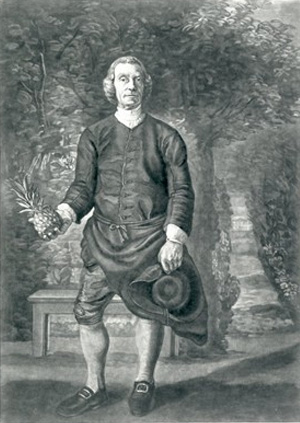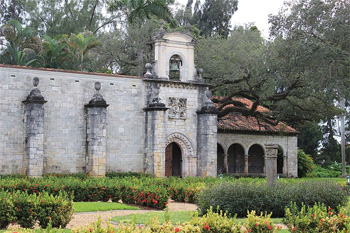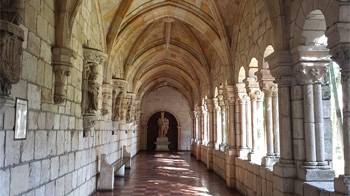5 Ways Being Rich Was Flat-Out Crazy Hundreds Of Years Ago

Sure, being rich has its benefits, but it's gotta be boring, right? If life's great meaning is derived from struggle and solidarity against overwhelming odds, then being rich is playing on easy mode (with the invincibility and infinite ammo cheats on). Where's the fun? Well, we aren't the first ones to ask that question. The historical record shows that the old-timey rich, in their struggle to stave off ennui and entropy, devised some remarkably absurd ways of passing the time. Like how ...
You Could Boost Your Sex Drive By Inserting Radioactive Material Up Your Butt
Sexual impotence isn't a modern phenomenon. Your great-grandparents probably had "performance issues," just like you (and if you didn't, you do now that we put that mental image in your head). So how did they conquer the long drop? We can't speak for the poors and how they dealt with losing their vigor (wishing really hard, probably), but the rich had a little technique called "jamming in a radium suppository."

At the turn of the 20th century, an entire industry revolving around solving sexual inadequacy sprung up, so to speak. One of these products was Vita Radium Suppositories, anal torpedoes "carried in a cocoa butter base" (for better ... flavor?) which promised to turn "weakened organs" into Godzilla by irradiating the bloodstream, and by proxy the balls. What about safety? Well, the manufacturers had certainly heard about that concept. According to their marketing pamphlets, the radium would leave the patient's system in three days, which is approximately two days, 23 hours, 59 minutes, and 59 seconds longer than we'd like.
The 1930s saw the release of a product with the enticing name of "Scrotal Radiendocrinator," which promised users they could kick-start their shattered scrotums by leaving a radium-filled jockstrap on their junk and going to bed. We can't totally vouch for the scienceness of this product, but it's worth noting that its inventor died from bladder cancer -- a total coincidence, and definitely not a warning that maybe Geiger counters shouldn't need to be sold in adult boutiques alongside battery-operated sex toys and blow-up effigies of Clark Gable.

There was, surprisingly, a solid rationale behind the madness. At this point, the scientific discovery of the day was that hot springs, which it was claimed could cure illnesses, were radioactive. Instead of waiting to hear more science, however, the medical-industrial complex immediately set about putting radium into a ton of health products, including water coolers and energy drinks like RadiThor. As radium is expensive, however, only the richest members of society could afford to partake, and that's why it never blew up into a pub(l)ic health crisis. The damage was reduced to a tiny population, comprised of people such as Eben Byers, an industrialist who downed two bottles of RadiThor every day for three years until his bones started disintegrating and he died in untold agony.
Still, we bet his dick looked amazing.
You Could Be The Envy Of Your Friends By Owning (Or Renting) Your Very Own Pineapple
When you really think about it, status symbols haven't changed that much from the days of yore. There have always been high-end fashions, big houses, fast cars (horsepower used to be less figurative), and status foods. It's just that in the past, said foods used to be less "gold-plated donuts" and "avocados," and more "pineapples" and " seriously, pineapples."


For the high houses of Europe during the 1700s, the pineapple represented the very essence of wealth. The fruits were previously only found in South America, until enterprising souls in England and the Netherlands developed hothouses that allowed the growth of these magnificent units in wetter, more Europey conditions. They were still scarce, of course, and so owning one was basically a gigantic signal advertising how well-to-do you were. Repeat customers included Louis XV, Catherine the Great, and Charles II, all of whom we're sure needed the help signaling their wealth.
But soon, owning a pineapple wasn't enough. The hardcore pineapple fandom of the 1700s meant that people did everything from depicting them on wallpaper and tablecloths, to covering their mansions in wooden and stone carvings of pineapples, to hosting dinner parties where the pineapple would be the star centerpiece. Eat it? No, you were meant to look at it and gaze in wonder at its beauty, and that was seriously enough. Charles II even commissioned a painting of someone handing him a pineapple. To the elite of society, pineapples were the Szechuan Sauce packets of the day, and by Jove, woe betide your reputation if you put that shit on pizza.

But what if you were a middle-class person who yearned for the trappings of wealth, but still wanted to write checks that only a pineapple could cash? Well, there was also a thriving pineapple rental market. In the same way that celebrities rent fancy tuxedos and sports cars before attending society galas, it was a trend du jour to mingle and cradle a pineapple in your arms, before returning it the next morning and trying to justify to the renter why you shouldn't lose your security deposit because someone took a bite out of it.
You Could Hire An Old Person Dressed Like A Wizard To Live In Your Garden
It's easy to look at the gig economy and shake your head at how poorly megacorporations like Uber, Amazon, and Seamless treat their independent contractors (read: people working independently of employee rights), but it could be much worse. They could be living in the grounds of Jeff Bezos' palatial estate and dressing like Gandalf.
We've mentioned that in the 18th century, it was all the rage for landowners to hire "hermits" -- basically the olden equivalent of that crazy guy from the bus station -- to rove their grounds and dispense sage wisdom to anyone who wandered past. But what exactly were the roles and responsibilities of this job? Mostly sitting around and looking mysterious. Here's what guests to one estate were greeted by when they entered the hermit's abode:

In order to ensure that their hermits didn't die of exposure or wild animal attack, most landowners built them a place to live -- anything from a shack or outhouse to an earthen mound to a set of fake ancient ruins they could haunt like shaggy, well-learned ghosts. This might sound expensive, but it was worth it for the landowner to invest in their hermit. A "good" hermit could attract visitors from miles around, bringing money and prestige to the estate -- so much so that some landowners faked the whole thing by building a shack, leaving some spooooky items on a table, and pretending that their hermit had popped out to the shops for the day.
The trend didn't last long, dying out by the end of the century. It's thought, however, that hermits later served as the inspiration for your common-law garden gnomes. That's something to think about, particularly the next time your landlord or HOA bitches about your lawn ornaments. It's either the terracotta fishermen and pink flamingos, or a bearded guy who lives in your hedge shouting riddles at passersby.
You Could Wear A Creepy Mask To Avoid Catching A Tan, Like A Filthy Commoner
If you're rich, money can buy you a lot of things -- a lot of things. But there's one essential thing it can't buy: freedom from people accidentally mistaking you for a poor person. In the 16th century, this anxiety so horribly warped the minds of the rich that they thought it was better to look like a serial killer or a monster from the void dimension than someone who has to buy the generic-brand plague inoculation.
This is a visard mask, bought by upper-class ladies to prevent them from contracting a hideous suntan on their porcelain-white cheeks -- "hideous" because in those days, having a tan or even a hint of melanin suggested that you were one of those dreadful poors who had to work outdoors all day.
But hey, at least they suffered for it. The masks were made from velvet, silk, and layers of pressed paper, which doesn't sound too bad ... until you realize that there was no such thing as elastic. So how was it held in place? Well, the inside of the mask contained a glass bead dangling on a short length of string. In order to secure the mask, the wearer would have to hold the bead between her teeth, thus preventing her from doing anything other than sitting there in total silence. Which was probably part of its design, to be honest.

Although only a few masks survive to this day, they were popular enough that children's dolls from the period came accessorized with miniature visard masks, so that young girls could become used to their forthcoming lives of total silence and casual deformity. The masks remained in vogue for most of the century before dying out, probably after someone wondered whether they weren't being just a little silly.
You Could Steal Ancient European Buildings, Brick By Brick
On the face of it, it isn't surprising that historical rich people liked to sail to faraway countries and take whatever they wanted. That's how we ended up with the slave trade, after all. What is surprising, however, is how dumb it wound up getting. Case in point: A lot of 20th-century American moguls used to steal antique buildings and have them shipped back home, to be reassembled brick by brick like the world's most ostentatious set of Legos. And also like with Legos, sometimes they'd get bored halfway through and leave the pieces laying around.
Between 1914 and 1934, it's estimated that 20 medieval buildings happened to fall onto a back of a lorry in Europe and fall off of again when it was stateside, in locations ranging from New York and San Francisco to Milwaukee and Philadelphia. One of the most famous tomb raiders was sled enthusiast and original fake news proprietor William Randolph Hearst. In 1926, he imported a 12th-century monastery, St. Bernard de Clairvaux, with plans to install it at Hearst Castle. Due to financial difficulties, however, he later abandoned the pieces (still in the shipping crates) in a warehouse for nearly 30 years, before someone Storage Wars'd them and had the monastery reassembled in Miami, where most old things go to rest.


As the country hardest hit by these thefts, Spain later enacted several laws intended to stop rich assholes from stealing their heritage, but forgot to account for the fact that money is freaking dope, you guys. In 1930, Hearst paid an art dealer $30,000 to buy, disassemble, and ship another structure -- the monastery of Santa Maria de Ovila. You might think that buying monasteries was Hearst's way of atoning for his years of being a total shitheel, but noooo. He wanted to turn it into a literally goddamned swimming pool, complete with diving boards (placed where the altar used to sit), changing rooms, and an indoor beach.
He later wound up abandoning this project too, because he was, like, the William Randolph Worst.
Adam Wears is onTwitterandFacebook, and hasa newsletter about depressing historythat you should definitely subscribe to.
You laugh at the pineapple thing, but have you showed your friends how a pineapple corer works?
Support Cracked's journalism with a visit to our Contribution Page. Please and thank you.
For more ways our ancestors were utterly terrifying, check out 7 Popular Old-Timey 'Hobbies' That Will Give You Nightmares and 6 Fun Activities That Were Horrifying Throughout History.
Follow us on Facebook. If you like jokes and stuff.